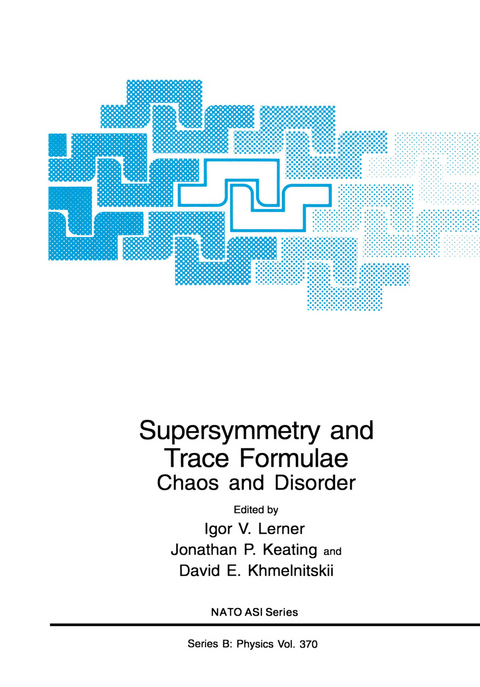
Supersymmetry and Trace Formulae
Kluwer Academic/Plenum Publishers (Verlag)
978-0-306-45933-7 (ISBN)
The motion of a particle in a random potential in two or more dimensions is chaotic, and the trajectories in deterministically chaotic systems are effectively random. It is therefore no surprise that there are links between the quantum properties of disordered systems and those of simple chaotic systems. The question is, how deep do the connec tions go? And to what extent do the mathematical techniques designed to understand one problem lead to new insights into the other? The canonical problem in the theory of disordered mesoscopic systems is that of a particle moving in a random array of scatterers. The aim is to calculate the statistical properties of, for example, the quantum energy levels, wavefunctions, and conductance fluctuations by averaging over different arrays; that is, by averaging over an ensemble of different realizations of the random potential. In some regimes, corresponding to energy scales that are large compared to the mean level spacing, this can be done using diagrammatic perturbation theory. In others, where the discreteness of the quantum spectrum becomes important, such an approach fails. A more powerful method, devel oped by Efetov, involves representing correlation functions in terms of a supersymmetric nonlinear sigma-model. This applies over a wider range of energy scales, covering both the perturbative and non-perturbative regimes. It was proved using this method that energy level correlations in disordered systems coincide with those of random matrix theory when the dimensionless conductance tends to infinity.
Periodic Orbits, Spectral Statistics, and the Riemann Zeros.- Supersymmetric Generalization of Dyson’s Brownian Motion (Diffusion).- What Happens to the Integer Quantum Hall Effect in Three Dimensions?.- Trace Formulas in Classical Dynamical Systems.- Theory of Eigenfunction Scarring.- Nonequilibrium Effects in the Tunneling Conductance Spectra of Small Metallic Particles.- Pair Correlations of Quantum Chaotic Maps from Supersymmetry.- Semiclassical Quantization of Maps and Spectral Correlations.- Wave Functions, Wigner Functions and Green Functions of Chaotic Systems.- Wave Functions in Chaotic Billiards: Supersymmetry Approach.- Correlations of Wave Functions in Disordered Systems.- Spatial Correlations in Chaotic Eigenfunctions.- Level Curvature Distribution Beyond Random Matrix Theory.- Almost-Hermitian Random Matrices: Applications to the Theory of Quantum Chaotic Scattering and Beyond.- Topological Features of the Magnetic Response in Inhomogeneous Magnetic Fields.- From Classical To Quantum Kinetics.- Stochastic Scattering.- H = xp and The Riemann Zeros.- Parametric Random Matrices: Static and Dynamic Applications.
| Erscheint lt. Verlag | 30.4.1999 |
|---|---|
| Reihe/Serie | NATO Science Series: B ; 370 |
| Zusatzinfo | IX, 404 p. |
| Verlagsort | New York |
| Sprache | englisch |
| Maße | 178 x 254 mm |
| Themenwelt | Mathematik / Informatik ► Mathematik ► Angewandte Mathematik |
| Naturwissenschaften ► Physik / Astronomie ► Allgemeines / Lexika | |
| Naturwissenschaften ► Physik / Astronomie ► Theoretische Physik | |
| ISBN-10 | 0-306-45933-7 / 0306459337 |
| ISBN-13 | 978-0-306-45933-7 / 9780306459337 |
| Zustand | Neuware |
| Haben Sie eine Frage zum Produkt? |
aus dem Bereich


